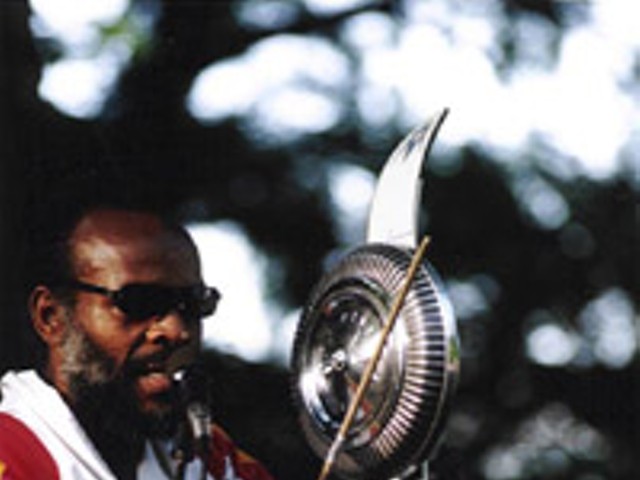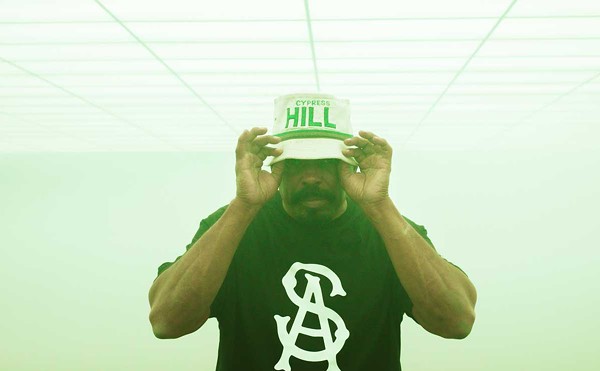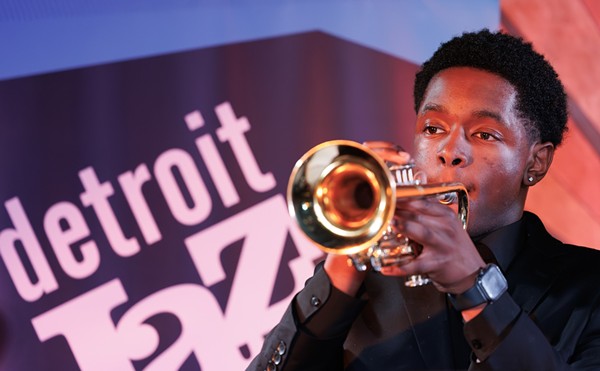Beat Street, Wild Style, Style Wars, Krush Groove! Now available on DVD! A b-boy in khakis hitting a handstand freeze on a Gap billboard. ESG’s South Bronx Story stuffed into a jewel case, tomes such as Back in the Days and Spring 2003 fashions by Sean John and J.Lo.
Shortly after the ’00s turned over, commercialism and consumerism turned their backward-gazing eyes toward graffiti writers, breakdancers, DJs and the fresh youth style of late-’70s and early-’80s Bronx block parties and co-opted the style in a big way. This after reducing the art of MCing to offensive bling-bling ’n’ booty throughout the last 10 years.
But in this quick-pop media-driven culture, trends tend to evaporate and re-emerge before we knew they left, which can mean the pioneers are still out there and still vocal. And Bronx old-schoolers Grandwizzard Theodore, who, you’ll note, invented the “scratch” and “needle drop” techniques, and Jazzy Jay, who worked the turntables for legendary Afrika Bambaataa’s Soulsonic Force are here to set the, er, record straight.
“They have a lot of commercials now that try to sell their products with hip hop,” allows Grandwizzard Theodore. “And way back when, when it first came out, nobody really wanted to really touch it. Now that it’s a billion-dollar-a-year business, everybody’s jumping on the bandwagon. And nobody’s giving props to the pioneers, like Bambaataa, Kool Herc, Grandmaster Flash and myself for making a blueprint so that everybody can be able to enjoy this culture. I think people should learn where it came from in order to know where we’re going.”
The pioneers are getting a little help from Scratch, a film featured at 2001’s Sundance festival (now, of course, on DVD), which offers a solid study of the art of turntablism. It takes us through its history, to how it’s done, to the future of the movement.
Jazzy Jay procured legendary status for himself with a 350,000-strong record collection, as one of the founders of Def Jam Records, a producer and a force of social change as part of Zulu Nation.
“We were down with (hip hop) from the beginning,” he affirms. “We didn’t care one way or the other. We were in it for the love of the music. We had to be involved. It was a part of us. We weren’t concerned about how big it was gonna get. We were just concerned with being able to rock a party, pleasing the people that came out to your party or doing free parties in the park.”
In addition to having your voice heard, another benefit to hanging around long enough to see a second muscial coming is that you’ll finally get your due.
ESG can attest to that. The rhythminimalist funk band of four sisters and their neighbor Tito also got their start in the Bronx in the late-’70s to early-’80s. And the DJs were quick to pick up on their steady bass grooves, percussion and Renee Scroggins’ otherworldly vocals. Everyone from Public Enemy to Big Daddy Kane to Doug E. Fresh to 3rd Bass to LL Cool J to Marly Marl sampled ESG. They’ve always been a critical and record-collector favorite, but like most critical and record-collector favorites, the band’s work was almost impossible to find. The UK’s Soul Jazz record label put out the retrospective, ESG: A South Bronx Story, in 2000; last year the label released Step Off, an album of new material.
Before playing Detroit this weekend (their debut Motor City appearance), Renee, Valerie and Marie Scroggins will be in the studio, working on their next album. “It might be our last album, but we said we were gonna do this,” says Renee.
This weekend’s festival will feature the current lineup. Sister Deborah and Tito, it seems, have pursued other things. And Renee’s daughters Chistelle and Nicole have taken on the duties of bass and guitar, respectively.
The sisters began playing music because “when we were growing up, the neighborhood we grew up in wasn’t, y’know, all that cool,” Renee explains. “And my mother didn’t want us hanging out on the street. She knew that we were very interested in music and she got us the instruments.” The members of ESG were aged 8-14 when they hit the talent show circuit and started playing professionally about six to eight years later.
Theodore invented the scratch at 15, when his mom was banging on his bedroom door and yelling at him about the noise. Her screaming caused him to inadvertently hold the needle down on one of the records and he liked the sound.
“As time went by, I practiced it and developed it and it became the scratch.” The first time he performed it, “people really flipped out. It was something new to them, hearing your favorite record and hearing certain parts of the record repeating itself … It made them party even more.”
This was a time when everything was new, a sound that manifested itself in lively and memorable block parties in the Bronx.
“A lot of people were getting into hip-hop culture,” he continues. “A lot of people thought it was a fad and sooner or later it was just gonna fade away, but as time went by, it got more popular and more popular. In the summertime, there were so many block parties in the Bronx. Block parties everywhere. Every block you go down, you’d see a block party. I really miss those days. Now, you can’t really do anything no more in the streets.”
Renee Scroggins recalls coming up musically at the same time and place. “It was a real fun time. If you were there and you were living the experience, it was a time when all kinds of music were put on the same bill. You would go to a club and you would have a punk act, a funk act, a rap act and everybody would come together and just check out the music.”
Which is the whole point, wouldn’t you say?
ESG, Jazzy Jay and Grandwizzard Theodore will perform at Hart Plaza (Jefferson Avenue and Woodward) as part of the Movement 2003 festival, May 23-25. For information, call 313-877-9077.
Melissa Giannini is a freelance writer from Chicago. E-mail [email protected]




